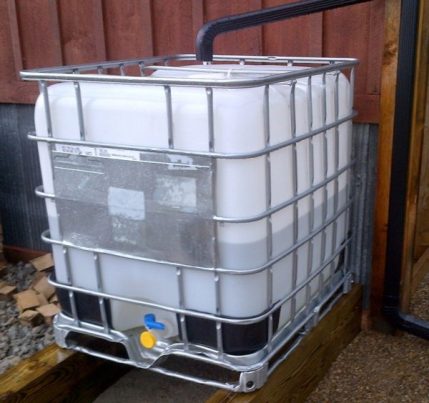
How to effortlessly collect rainwater for your garden this summer
Monday, April 17, 2017 by Tracey Watson
http://www.waterwars.news/2017-04-17-how-to-effortlessly-collect-rainwater-for-your-garden-this-summer.html

With more and more people choosing to live “off the grid” and be as self-sufficient as possible, rainwater harvesting systems have become increasingly popular. While having such a system professionally installed can prove costly, creating your own DIY system can be inexpensive and easy, and will start saving you money on your monthly water bill right away. You will also have the added bonus of being less reliant on municipal water, which can be a real bonus, especially in times of drought or water restrictions. (RELATED: Find more tips at OffGridLiving.news.)
It’s surprising just how much water you can collect. The Canada Mortgage and Housing Corporation notes that a well set-up rainwater harvesting system can capture as much as 80 percent of the rainwater that falls on your catchment area (generally your roof), though the other 20 percent will be lost to leaks and overflows or even absorption by roof materials.
Getting your rainwater collection system set up requires only five things:
- A catchment area, which will usually be your roof;
- A way to move the water from your roof to your storage tank, which will most likely be a gutter;
- A standard gutter diverter to get the water from the gutter into the tank. Most also filter leaves and other debris from the water before it enters the tank;
- The actual storage tank. An inexpensive, readily available option would be a water tote tank, which can hold up to 275 gallons. Whatever you choose to use, ensure that it has not previously been used to store chemicals or other dangerous compounds; and
- A threaded valve and hose adapter so you can get the water from the tank to your garden. These are readily available at plumbing and hardware stores.
The simple steps to getting your water harvesting system set up are as follows:
- Connect a simple gutter (downspout) converter to your gutter – you can obtain one online or from a gutter installer.
- Position your tank beneath the gutter converter, which has twin spouts. The tank will fill with water via the 6” opening found at the top of most water tank totes. When the tank is full, flip the switch and the water will be diverted away from the tank via the second spout.
- Attach the threaded valve and hose adapter to the 2” opening at the bottom of your tank so that you can connect a standard garden hose to it.
There are some important things to consider when it comes to rainwater harvesting systems.
A wise first step would be to confirm what your state’s legislation is regarding these systems, since rules and restrictions differ from state to state. While certain states encourage the collection of rainwater, with some like Rhode Island, Texas and Virginia even offering tax credits on the purchase of rainwater collection equipment, other states, particularly those out west where water is scarce, have complicated water collection legislation. The National Conference of State Legislatures published a comprehensive list of state rainwater harvesting laws in November 2016, available online.
It should also be noted that the type of material from which your roof is constructed can affect the quality and quantity of water you can collect. Some roof materials, like concrete or clay tiles, wooden shingles or asbestos shingles are very absorbent, which will limit how much water you can collect. Roofing materials may also be contaminated with pesticides or heavy metals, which would make the water collected unsafe for drinking or for watering your fruits and veggies.
You might also want to consider filtering or disinfecting the water in your storage tank, particularly if you plan to drink it.
And finally, it is a good idea to drain and store your storage tanks in a barn or garage in the fall, to prevent them cracking or freezing in winter.
(Photo credit: Old World Garden Farms)
Sources for this article include:
Tagged Under: Tags: DIY, Off Grid living, rainwater harvesting





